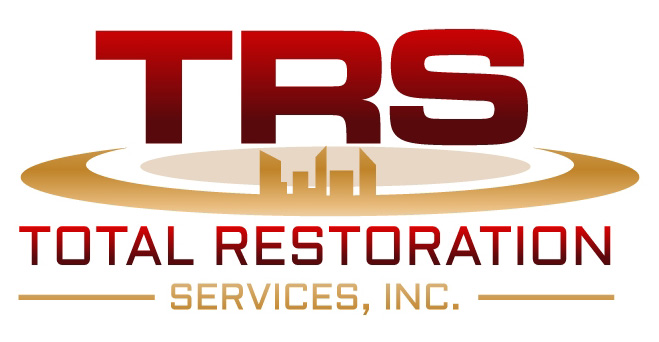Believe it or not, your state-of-the-art facility can be brought down by one thing: moisture. One of the most powerful forces on Earth, water damage is a major risk to your building’s structure and safety. Protecting your organization’s biggest investment means keeping your building dry.
Investing in waterproofing maintenance, keeps the water out, while conserving revenue in the long run. Why is that?
Why do you Need Waterproofing Maintenance services?
Concrete is a strong surface but its structure can eventually warp and weaken due to a variety of environmental factors and general use. Dirt, chemicals, oils, and, of course, water can wear away the outer layer of the concrete to threaten foundational integrity. As cracks and deformations form, water can sink lower into the concrete and accelerate the damage. Concrete’s structure makes it vulnerable to several weaknesses that decay its structure: alkalinity, permeability, and reactivity. All these properties are increased with exposure to water.
What are Waterproofing Maintenance Services?
Waterproofing maintenance involves chemical and structural treatments preventing liquid from eroding key surfaces (primarily concrete). While some waterproofing methods that can be done individually, construction and restoration experts have specialized training for industrial or large-scale building requirements. Besides obvious signs of cement damage, it’s vital that proper methods are applied to guarantee both workplace and environmental safety. Use trusted professionals!
There are actually several waterproofing methods to choose from. Industrial restorers will work with you to assess your building and determine which options offer the best quality and protection. They might actually recommend several initial waterproofing methods from the start, however once applied, maintenance is relatively minor. This simply upholds the strength and vitality of your waterproofing applications.
Let’s look at a few waterproofing maintenance methods:
Positive/Negative Barriers
Positive barriers are applied to wet or outside surfaces and are designed to protect concrete and even steel interiors from water sinking past the outer layer. These barriers can be implemented as sheet membranes or fluid-applied membranes. These form a good first line of defense that stops water from literally getting in. However, these can be compromised over time, which is why maintenance is important. If erosion starts to break down the positive barrier, it may need to be re-administered to protect the rest of the surface, costing more money in repairs.
Negative barriers are applied to the dry subsurface of materials. This barrier keeps water from getting into occupied space, literally staving off the water from spreading. While this helps prevent the spread of water damage, more protection is usually needed. Negative barriers are maintained as a secondary defense.
Membranes/Coating
Protective coatings like epoxy and other membranes are often applied as negative barriers. These are some of the most common and reliable forms of waterproofing methods. Extremely versatile, these coatings can also be applied as resins and other forms. Protective coatings are compiled of different chemical components that protect concrete from chemicals and physical damage in addition to water damage. Therefore, protective coatings actually give you more return on investment. Here are just a few examples:
- Polyurea Coating
- Polyurethane Liquid (membrane)
- Vinyl Ester Resin
- Grout and Epoxy Injection
- Bituminous Coating
Joint Sealants Systems
Joint sealants are gel/liquid solutions that are injected into the openings between surfaces to keep water from getting into sections that are exposed or could accumulate moisture. By filling gaps in the surface, or in damaged areas like cracks, this maintenance halts the spread of water to the foundations of the site. This is also good for preventing damage associated with air and industrial chemicals. Sealants can be applied either hot or cold, depending on the requirements of your facility. One of the most popular, versatile, and reliable sealants is polyurethane. Besides offering optimal protection against the elements, polyurethane sealants also add aesthetic appeal.
Flashings
Flashing describes when weatherproof, water-protective materials are installed around or on top of surfaces that might be susceptible to moisture accumulation. Flashings serve as a barrier to prevent water from penetrating the vulnerable surfaces, reducing associated damage. This method also helps prevent mold from developing and spreading in your facility. Applied to areas like vents and chimneys, flashing materials and methods vary from metals like aluminum to liquid-based materials.
Maintenance Saves you Time and Money
Waterproofing maintenance gives you further assurance that your building remains fully functional and that your valuable waterproofing investments continue to pay off. Remember, a little maintenance saves a lot more money than expending your budget on complex repairs and refinements. And don’t forget, this maintenance also keeps your team and equipment safe while also enabling operations to be performed at peak efficiency. That’s a lot of benefits from simple maintenance. This also allows professionals to identify other building problems before they become major issues, saving you further loss and frustrations before it’s the case!


One Comment on “What are waterproofing maintenance services?”
I had no idea that in order to waterproof something properly it has to have structural and chemical treatments. I have always wanted to waterproof my basement but I didn’t know how. I think it would be best for me to call some professionals to come to do it for me so that it is treated correctly.